Art Fairs
Art Basel Paris Director Clément Delépine Reveals What to Expect as the Fair Enters a New Era
From lifestyle shopping to ambitious rehangs, we discuss what’s in store for the fair's debut at the newly-renovated Grand Palais.
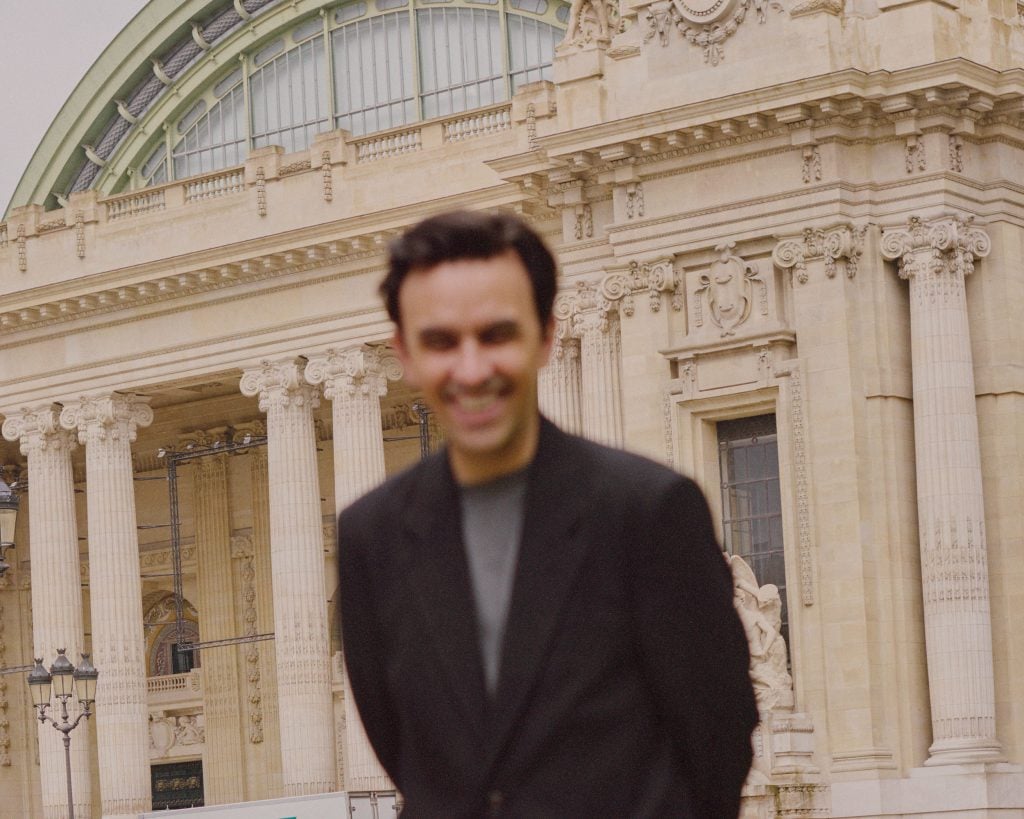
After an exciting and eventful Frieze week in London, the art world’s attention now shifts just a Eurostar train ride away to Paris. As we gear up for another art-filled week, I spoke with Clément Delépine, director of Art Basel Paris, to discuss what’s in store for the fair ahead of its debut at the newly-renovated Grand Palais.
Let’s talk about the fair’s new name. Why move the branding from Paris+ to Art Basel Paris?
I think the city understood that Art Basel as a global brand could better serve the city of Paris if it could shine at its fullest. Art Basel Paris is much more easy to process as a concept than Paris+ was in fact. Everything else only works if the fair, which is the center of gravity of it all, is strong and identifiable in its brand.
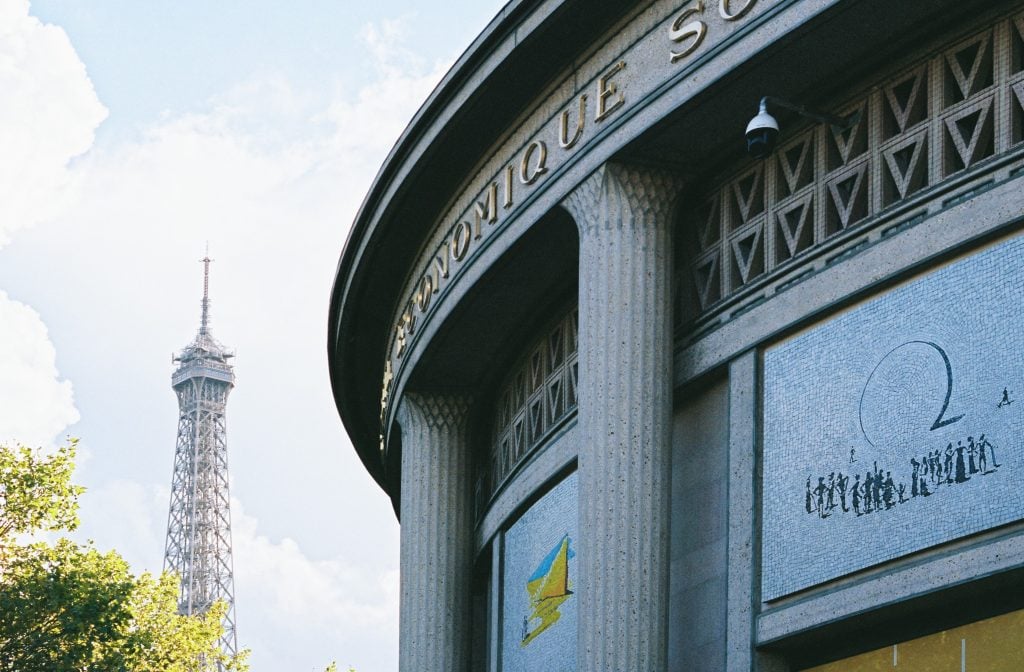
Courtesy of Art Basel.
That’s not the only novelty this year. The fair is moving to the Grand Palais proper, for the first time. What impact will the newly renovated venue have on the fair?
It’s going to change everything. First, it’s a truly beautiful venue. One might argue it’s perhaps the most beautiful venue in the world to host an art fair. We have added 40 galleries, which is quite substantial for an event of that size. There was also an acknowledgment from the selection committee of the different typologies of spaces within Grand Palais. There’s the nave, but there are also the upper galleries. So it’s a fair that we had to conceive from different points of view, because if you’re upstairs looking downstairs, you also want to be impressed.
The sector Émergence, which was positioned at the center, geographically speaking, of the fair last year, has been moved to the balconies. It’s an important part of the renovations that now you can walk around the balconies in one uninterrupted route. And as they overlook the nave, they can be seen from downstairs.
And, of course, the center of gravity has shifted to Grand Palais, and so the public program had to be rethought consequently. We started a new partnership with the Petit Palais right across the street, where the Conversations program will be held. With the support of the city of Paris, we pedestrianized the avenue between them with a display of artworks. We also started a new partnership with the nearby Centre des Monuments Nationaux at the Paris Hôtel de Ville and the Jardin du Palais Royal with new artworks.

Grand Palais, Paris. ©Chatillon Architectes pour GrandPalaisRmn. Courtesy of Art Basel.
It is a stunning venue for an art fair, although it can’t compete really in terms of square footage with the Convention Centre in Basel. Somebody told me that there isn’t a comparable large space in the city of Paris, and that’s why there was a need to build the Grand Palais Éphémère while the Grand Palais was closed. Is space an issue?
Do you know the French writer, Georges Perec? Famous for writing a book without the letter “e”, called La Disparition. He famously said once, “I set myself rules in order to be totally free.” Sure, it can be perceived as an obstacle, but I think, if anything, the scale forces us to be precise. We really have to think of what it is that we want to say, because we can’t dilute it—anything that doesn’t fit is suddenly much more conspicuous.
In that sense, yes, we have 100 galleries less than Art Basel in Basel (which is also one of the reasons why we shouldn’t be seen as a threat for Art Basel in Basel). The largest booth in Miami is perhaps 170 square meters, whereas the largest booth in Paris would be 76 square meters. So yes definitely, it’s a smaller fair. I wouldn’t say space is an issue. If anything, it’s also a fair that you can discover in its entirety. I’m happy with the size of my fair.
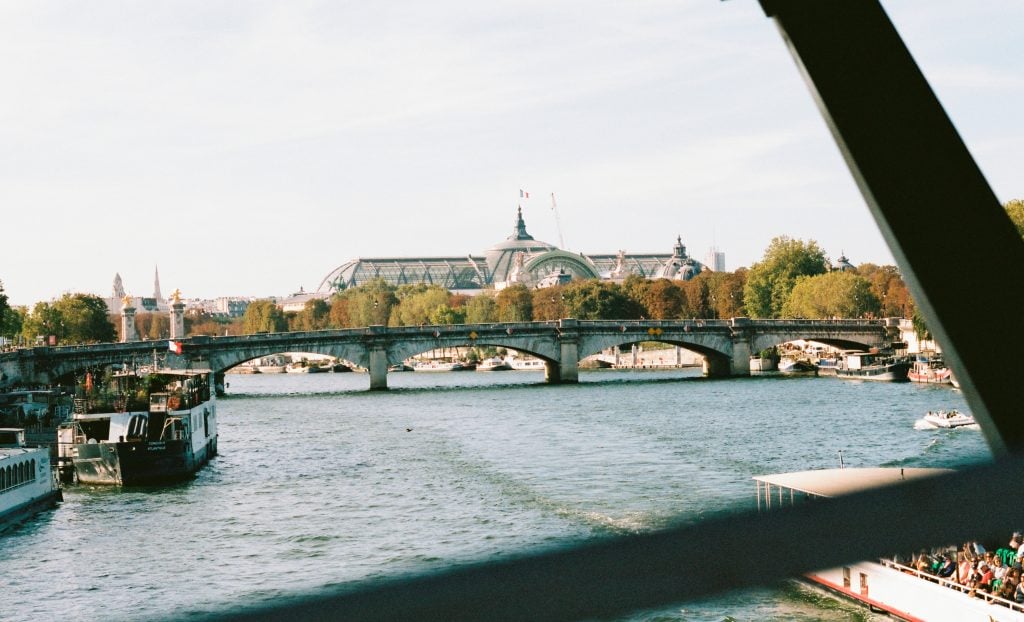
Photo: Aliki Christoforou. Courtesy of Art Basel.
There is also a new sector, Premise, which includes works made before 1900. Before Art Basel Paris, we had FIAC, and contemporary was very much at the center of its brand. Does this signal a new direction for Paris?
Well, Art Basel is very much a Modern and contemporary art fair. Given the size of the Modern sector in Basel, it’s easier to grasp in Basel than it is in Paris, but a tenth of our exhibitors are Modern galleries here in Paris. It’s definitely something that we wish to celebrate.
But the reason for Premise was really to carve a space for curatorial freedom within the fair’s blueprint. Last year, we received applications for projects that were very interesting but were not a good fit for the general sector, nor a good fit for the emergent sector. They were just really weird to a certain extent, and themed projects. The selection committee couldn’t find a proper receptacle for them. And we wanted to create a platform, Premise, to allow for it. It’s an old trope of art history: sometimes it’s the exhibition that is the work of art.
And I guess it’s a distant homage or an echo to what has been negotiated in Venice throughout the past two Venice Biennales—how do you partake in rewriting the canon? In all humility, I’m not pretending that we are rewriting a canon, but it’s definitely an effort that we wish to support, in our way. To make space for under-appreciated practices, to make space for art beyond certain typologies of objects, dates of creation … I think it’s important.
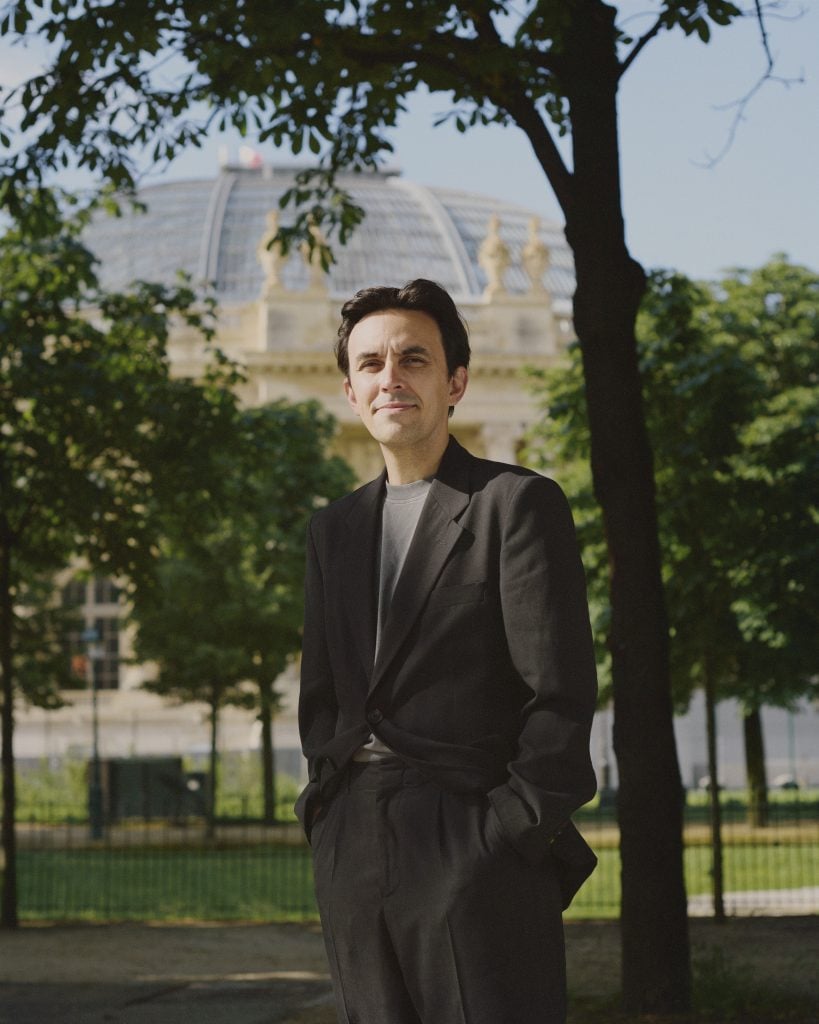
Clément Delépine. Photo: Matthieu Croizier.
In the past eight years, since Brexit, there’s been a renaissance in the French art market. To what do you attribute this growth?
Yes, the French market is consolidating its place as the fourth market globally. But it’s not something that happened overnight. It grew from, something like three or four percent to seven or eight percent in 20 years. You might argue that, in the same time, the Chinese market grew from nothing to 22 percent. But in Europe, it’s quite substantial. Fifty percent of the art transactions in the European Union happen in France. So I think that’s a testament to the vitality of this market.
It’s also very well supported by its government. I don’t know if you followed what happened with the VAT for instance last year, but definitely there is a will to support this market. There is also a collective effort to reposition Paris that is understood at every echelon. Public institutions, private foundations, galleries, government, Minister of Culture, the city … We understand that collectively, there is something to be done here, to be achieved. Which is rare. Such unison in France, as you know, is a rare phenomenon.
I’m curious about another new initiative this year, Oh La La, a special program that is designed to encourage dealers to display rarely seen works later on in the run of the fair. Have you historically seen a drop in attendance, or sales, as the fair progresses?
It’s not a drop in attendance, because it coincides with the public days. So actually there’s an influx. But it’s just like, the fair is five days of duration in Paris. It’s a little longer in Basel. And galleries bring amazing inventory. And sometimes, people don’t realize how much they miss in terms of masterpieces being shown, in terms of really top-quality works being on view during the weekend. And we wanted to celebrate the efforts of the galleries that re-hang in a pretty ambitious and substantial way. We have the support of the communication team, so galleries participating would get more visibility and be promoted on social media and everything.
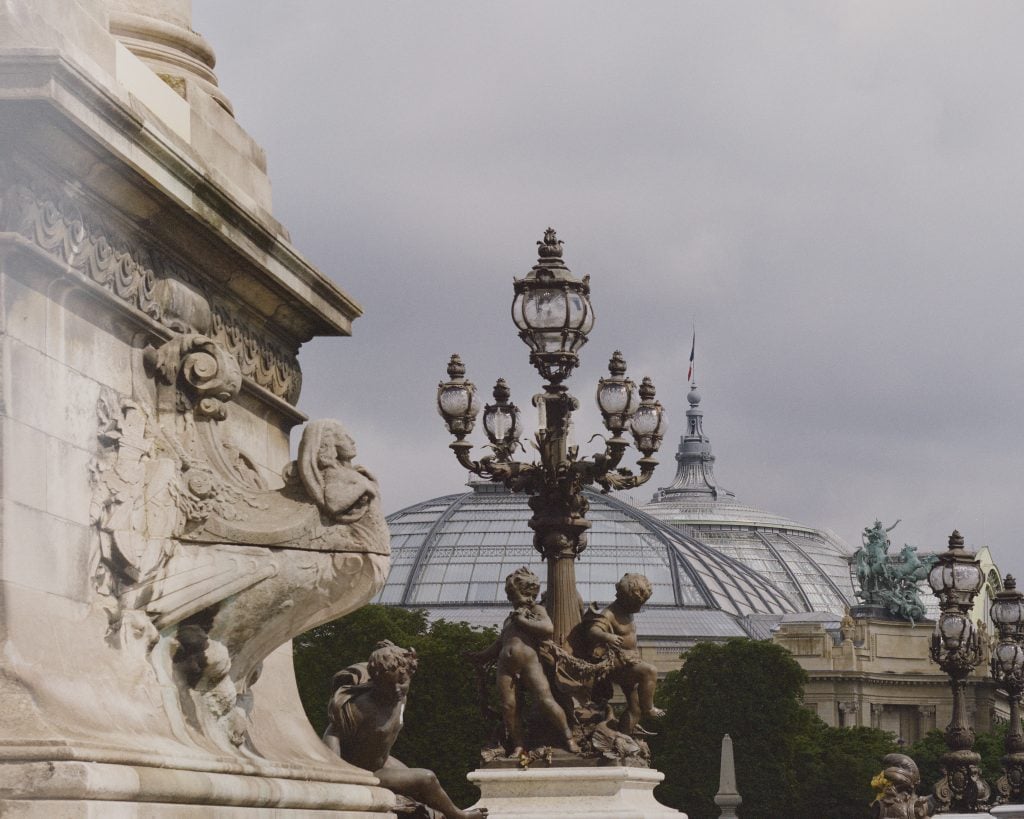
Grand Palais, Paris. Photo: Matthieu Croizier. Courtesy of Art Basel.
This year in Switzerland, there was much ado about the new Art Basel Shop, which will also make an appearance in Paris. Can you tell me a bit about the strategy behind this initiative?
I think we’ve talked a lot about contexts. When you’re Art Basel and you realize that within a specific industry, you’re a heritage brand, but that brand also triggers interest beyond your field of specialty… That it creates a certain nostalgia, or people are growing an attachment for the brand, and you wish to offer more than an event of professionals for professionals, what could you do? It’s the perfect playground to test the attractiveness of the brand and the possibility of cementing it as—I’m tempted to say lifestyle, but it’s not the word that I want to use—a cultural brand at large. And I think that’s what we want to play with.
Also, it’s a funny way to revisit your own history. To take a little bit of distance, have a little fun with this. Like certain types of objects that play with the brand without making fun of it. It doesn’t have to be a very serious thing. It’s a touch of lightness.
In Basel, I was amused by the “unlimited inches” measuring tape.
I offered the “unlimited stress ball” in the shape of a truck to our operations manager. She was not amused!
A different excerpt of this interview appeared in Artnet’s Mid-Year Intelligence Report. If you’re hungry for more Art Basel Paris content, you can read it here:






